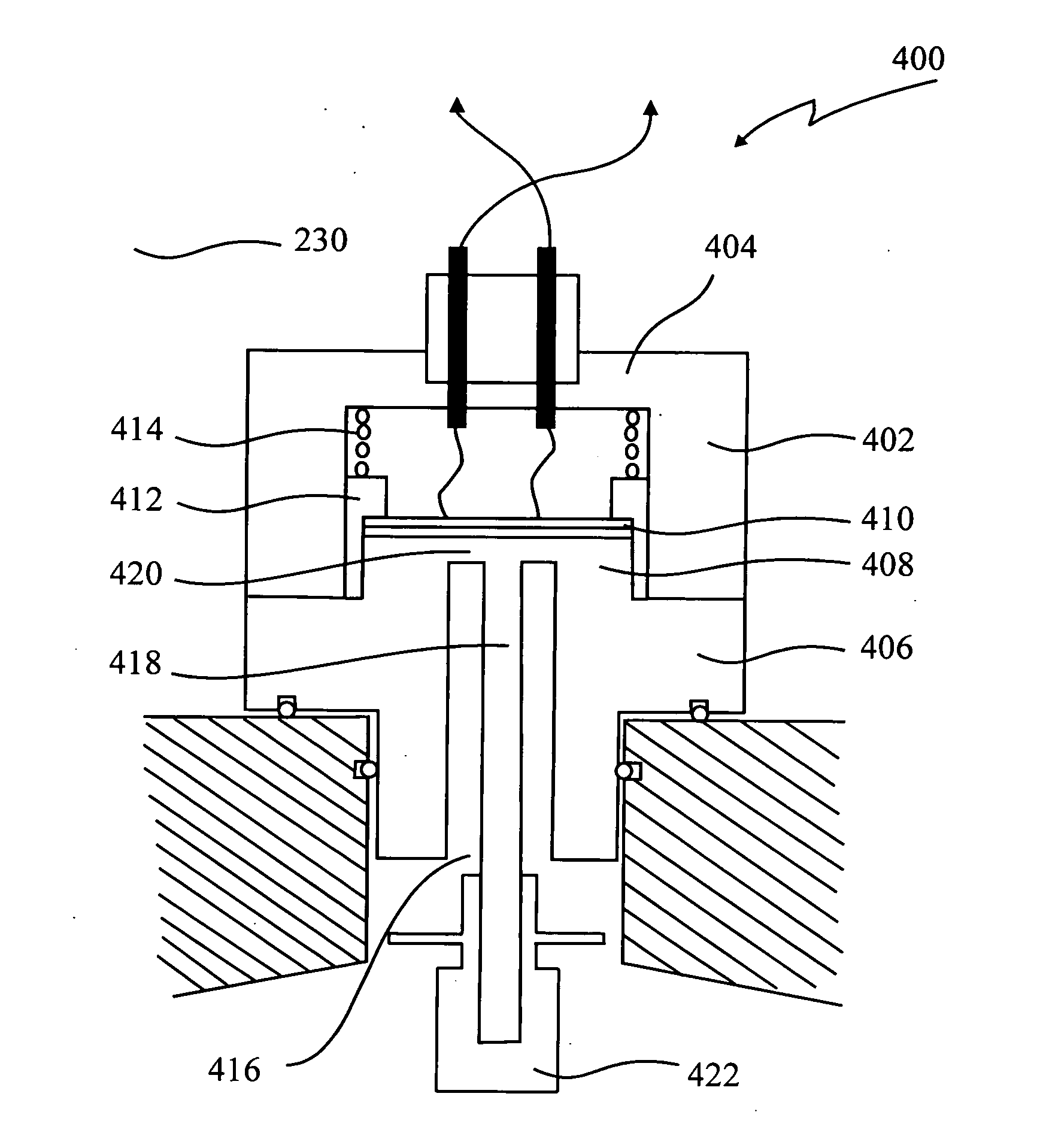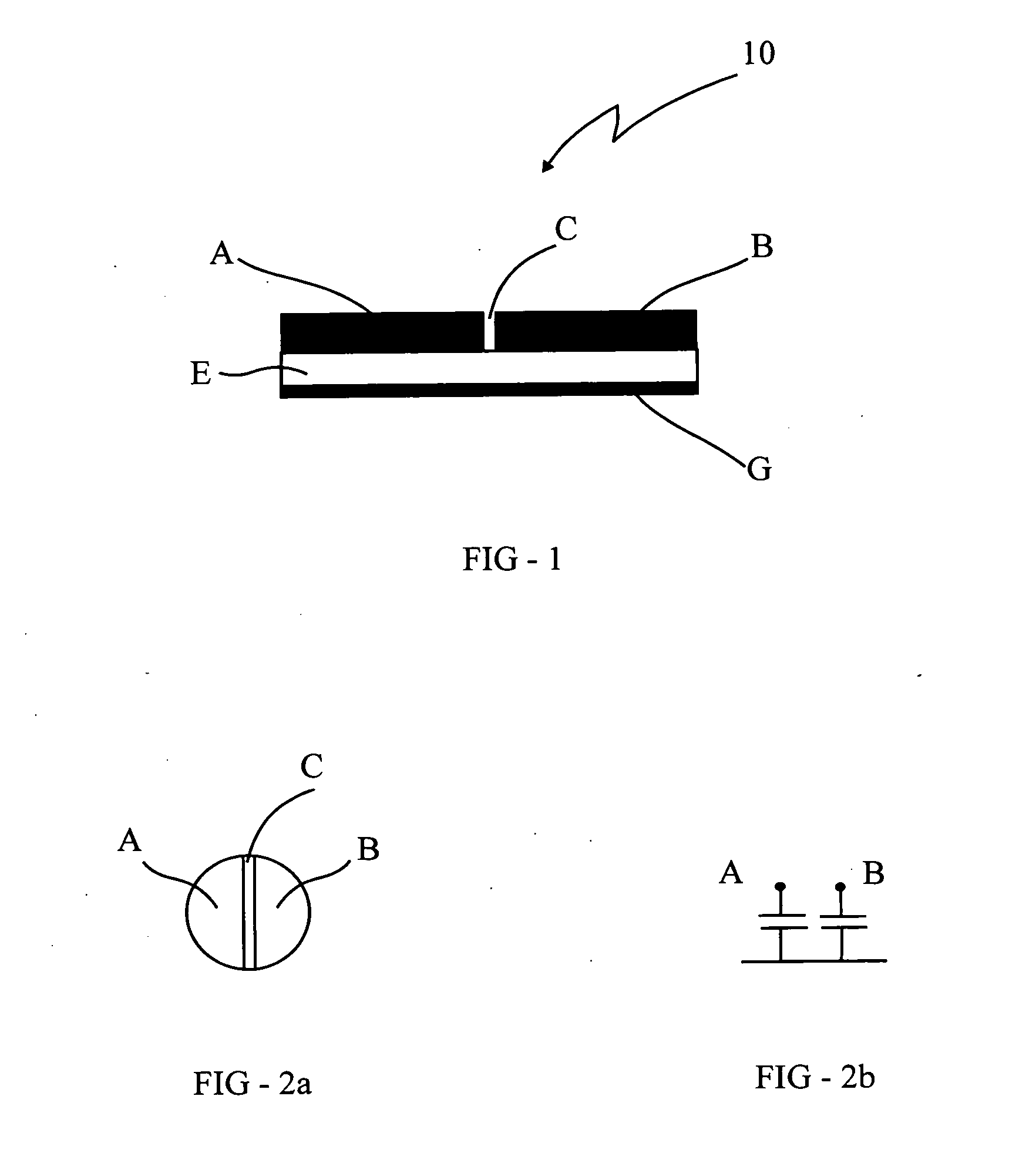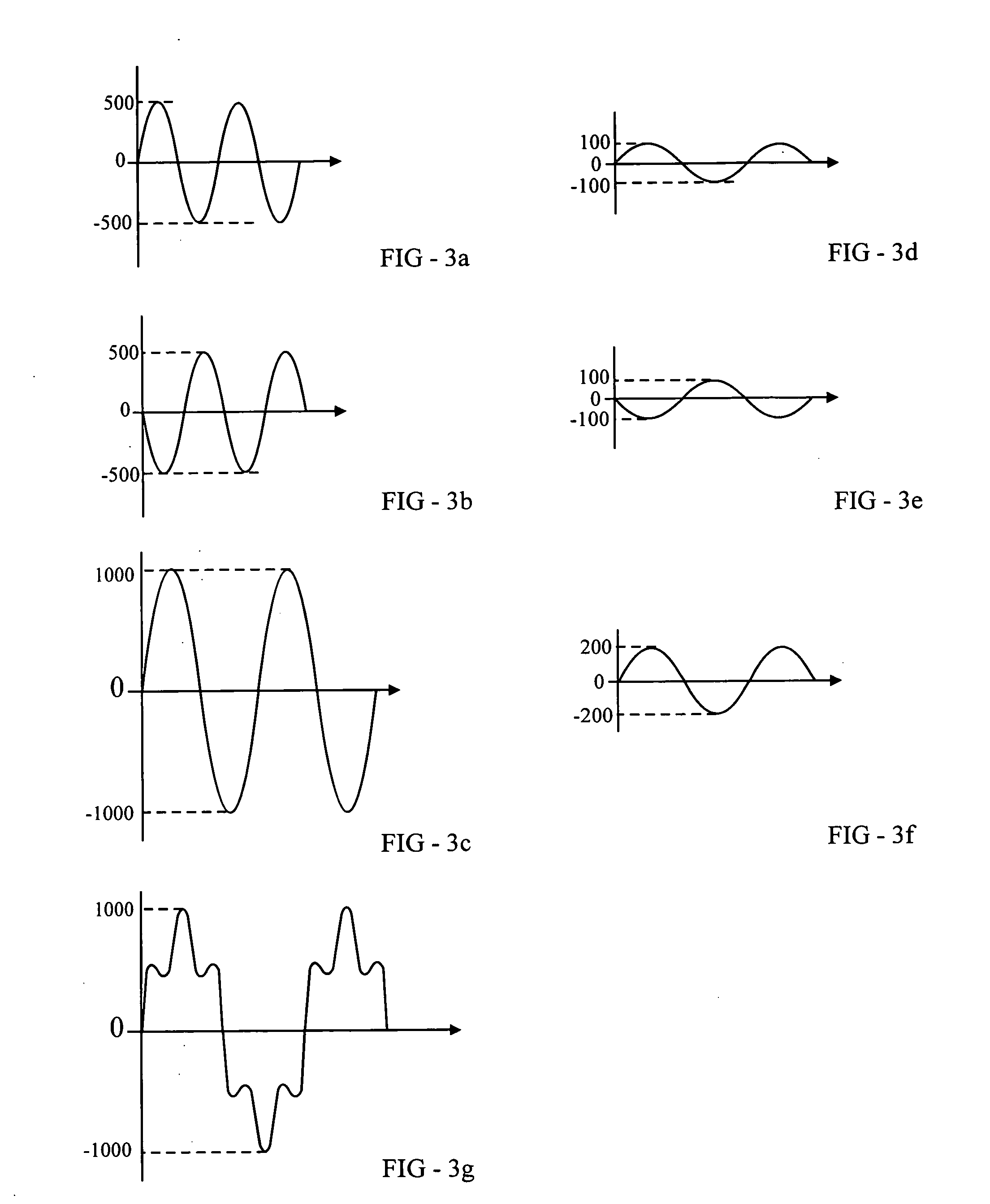Sensor devices
a sensor and sensor technology, applied in the direction of mechanical vibration separation, volume/mass flow by dynamic fluid flow effect, liquid/fluent solid measurement, etc., can solve the problem of limiting the useable measurement range of the flow meter, unable to obtain a construction resistant to vibration, temperature shock and corrosive media, and sensor only having limited temperature resistan
- Summary
- Abstract
- Description
- Claims
- Application Information
AI Technical Summary
Benefits of technology
Problems solved by technology
Method used
Image
Examples
Embodiment Construction
[0079] Referring to the drawings, FIGS. 1 and 2 shows schematically a piezoelectric element used for sensing devices in the prior art.
[0080] The sensing element shown in FIG. 1 consists of typically two semicircular halves A and B of a Piezo electric disc generally indicated by the reference numeral 10 divided by a plane including the non sensing space C and provided on a ceramic substrate E with the reference electrode G on the bottom surface of the substrate E. The electrodes A and B are alternatively compressed by oscillatory impulses acting on them. The two semicircular halves of the Piezo electric disc 10 with reference to the reference electrode are represented by the electric circuit representation in FIG. 2b.
[0081] The output signals in response to a measurand are graphically represented in FIG. 3(a), 3(b) and 3(c) in which FIG. 3(a) represents the output signals of electrode A to a measurand, 3(b) represents the output signals of electrode B to the measurand, and 3(b) rep...
PUM
 Login to View More
Login to View More Abstract
Description
Claims
Application Information
 Login to View More
Login to View More - R&D
- Intellectual Property
- Life Sciences
- Materials
- Tech Scout
- Unparalleled Data Quality
- Higher Quality Content
- 60% Fewer Hallucinations
Browse by: Latest US Patents, China's latest patents, Technical Efficacy Thesaurus, Application Domain, Technology Topic, Popular Technical Reports.
© 2025 PatSnap. All rights reserved.Legal|Privacy policy|Modern Slavery Act Transparency Statement|Sitemap|About US| Contact US: help@patsnap.com



